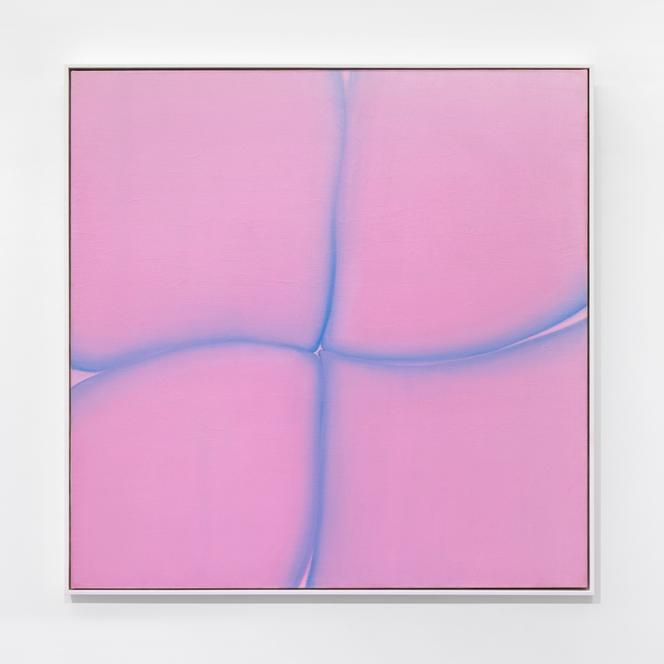


Free is a rather weak adjective to describe the career and work of Lebanese artist Huguette Caland (1931-2019). The daughter of Béchara El-Khoury, she was 12 when he became the first president of Lebanon, which became independent in 1943. Instead of the comfortable life this situation seemed to promise, she preferred a more hectic one, married a Frenchman, Paul Caland, and didn't shy away from adventures. Above all, she drew and painted, took courses at the American University of Beirut and moved to Paris in 1970. She remained there until 1987, when she moved to Venice, California. The exhibition is devoted to her Parisian period, with drawings and paintings that have never been seen before.
Most of the paintings are part of the Bribes de Corps ("Pink Feeling Blue") series, which lasted throughout the 1970s. They draw the eye in from afar with their naked simplicity of composition in a few curves and two or three colors, no more. At first, they seem abstract, akin to the work of American color field painters Morris Louis and Kenneth Noland. But it soon becomes apparent that these curves are those of parts of the female body seen very closely: mouth, vulva, hips. Stylized to the extreme, sometimes magnified by intense pinks or yellows, sometimes barely enhanced by a few pale tones, they remain easily identifiable. This is true even in works where Caland has reduced and aggregated anatomical volumes to the point of suggesting unknown vegetation or landscapes of dunes and rocks. In the latter case, white dominates, light and luminous.
You have 50.82% of this article left to read. The rest is for subscribers only.
